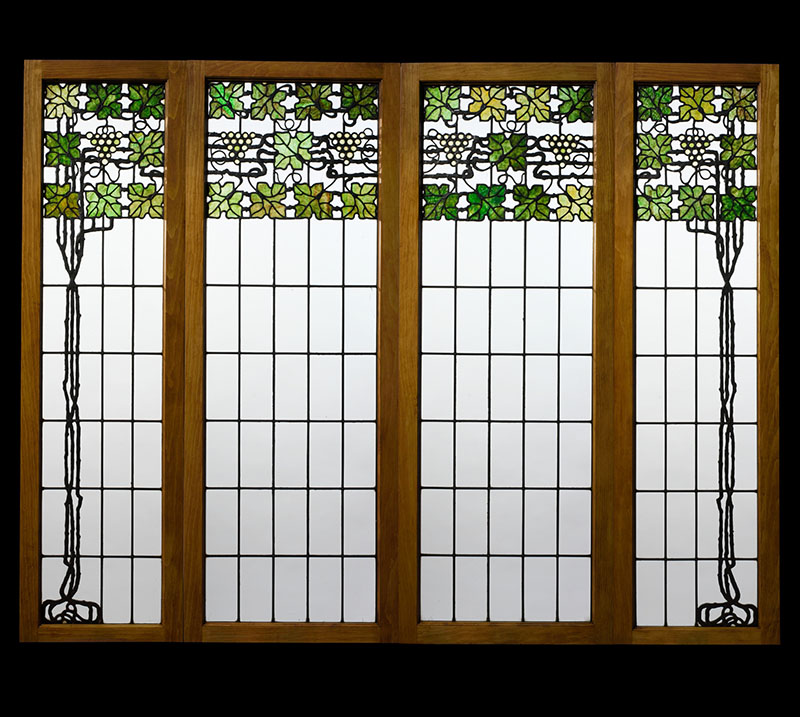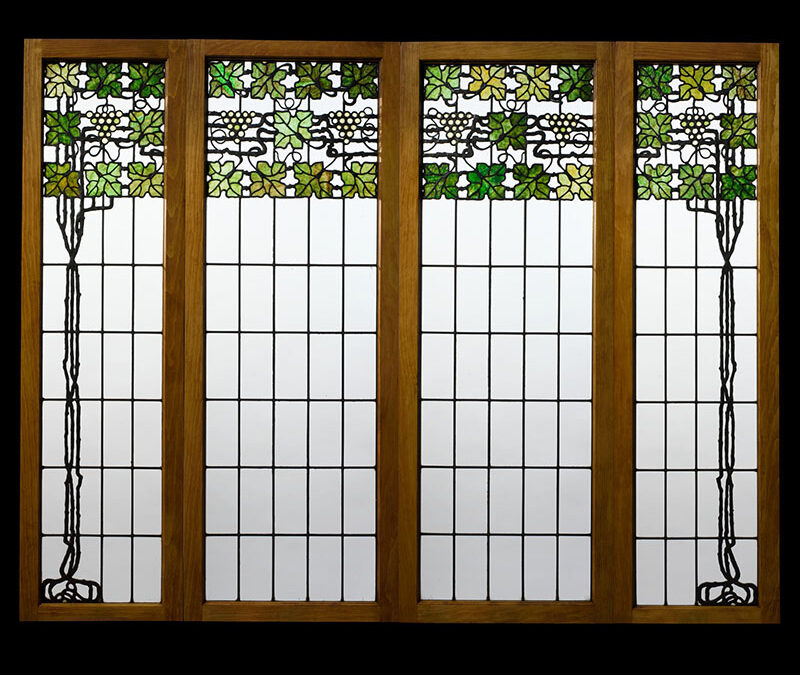Stained Glass Window

| Maker | John Scott Bradstreet |
| Date of Creation | 1906–08 |
| Location | Minneapolis, Minnesota |
| Materials | Leaded glass |
| Institution | Metropolitan Museum of Art |
| Credit Line | Purchase, Sansbury-Mills and Friends of the American Wing Funds, 2010 |
| Accession Number | 2010.122a-d |
| Photo Credit | Metropolitan Museum of Art |
This window, composed of four vertical lancets, was designed by the important Prairie School designer John Scott Bradstreet (1845–1914). Bradstreet has been credited as the principal tastemaker in Minneapolis, MN, during the late 19th and early 20th centuries. Like other Arts and Crafts artists of the era, Bradstreet provided the community with a variety of media, notably furniture and textiles, that he incorporated into fully integrated interiors on behalf of affluent clients. His enterprise, John S. Bradstreet & Co., was a full-service firm that provided woodwork, lighting, tiles, carpets, and drapery, much of it their own design and fabrication. He drew especial attention to stained glass, hoping “to help to raise this art to its former high level,” as one of his early marketing pamphlets noted. He often collaborated with the young architect William Kenyon (d. 1940), for whose home in Minneapolis these windows were made about 1906. One of the hallmarks of American Arts and Crafts windows is a preponderance of transparent, colorless glass. The window, thus, is not a barrier to the outside, but serves to bring the outside environment into the interior, amplified by the grapevine motif which frames it. The grapes, leaves, and grapevines are organized in a highly architectural, rigid geometry, unlike, for example, the contemporaneous work of Louis C. Tiffany. Each leaf, of a textured yellowish-green glass, fits within a square; the bunches of grapes within a triangle—together creating a rhythmic design. The leading serves not just a structural function but also an artistic one as it forms the clustered vertical agitated vines on either side and at the bottom, in the highly geometricized bunched roots, the design ethos of which is highly characteristic of Bradstreet’s work.

